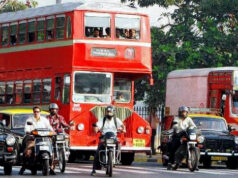By: Ishu Kumar (Communicating Reality Intern 2011, CCS)
In his weekly column for the Hindustan Times – Left Hand Drive – Mr. Sitamram Yechury argues that the United Progressive Alliance II government is implementing neo-liberal economic reforms in its second term, and that this is against the UPA’s professed concern for the aam aadmi (common man).
We believe that whatever little deregulation happened post 1991 has been vital for the income growth of the aam aadmi. But that is something we can agree to disagree on with Mr. Yechury, we cannot however agree to disagree on two grounds. One, making fallacious use of statistics to draw logically (not ideologically) unsubstantiated conclusions. Two, making claims which are not backed by data. Mr. Yechury is guilty of both these sins.
As for the first area of disagreement, Mr. Yechury says:
“Over the last two years, the number of US dollar billionaires in India has increased from 26 to 52; now standing at 69…On the other hand, 77% or more than 80 crore, of our people survive on less than Rupees 20 a day”.
This is comparing mangoes (Delhi summers bring great mangoes) to oranges. In economic terms this is comparing a stock variable to a flow variable. “A stock variable is measured at one specific time, and represents a quantity existing at that point in time”, a flow variable on the other hand “is measured over an interval of time” (Wikipedia). The number of people surviving at less than Rupees 20 a day in 2011 is a stock variable, the increase in number of billionaires over the last two years is a flow variable. The scientific question is whether the number of people living on less than Rupees 20 a day has increased over the last two years?
Mr. Yechury also goes on make claims wholly unsupported by data, this is our second area of disagreement. He says: “The vulgar disparities of income and wealth are sharply widening”. The fact of the matter is that between 1980 and 2002, there was no change in the Gini coefficient of India (a measure of overall income inequality), implying that if the incomes of the rich have grown so have the incomes of the poor. In fact during the same period the share of the income-wise bottom 20% of Indians in national income increased by 5%, share of the poor in expenditures increased by 1.5%, and the ratio of the growth of incomes of poor to the growth of incomes of the non-poor was 1. This is true not just of India but the world in general.
A natural corollary is the fact that high end automobile companies like BMW, Audi, and Mercedes have achieved rapid growth in Indian markets and are paving the way for brands like Ferrari and Rolls Royce. Along with this, there has been a marked rise in the sales of two-wheelers and small segment cars.
Why all this hoola-ho about poor getting poorer if numbers don’t back that claim? In his Indian Express article today, Surjit Bhalla warns us against intellectual corruption and the poverty industry – the people who benefit by running pro-poor programs. In this industry profit-maximization means poverty-maximization. Surjit Bhalla says
“…Indian intellectuals want to document that the poor are getting poorer, and as evidence, use the fact that the consumption of calories by the poor has barely increased, and perhaps even declined. That this is a historical worldwide pattern that is to be expected with a reduction is not relevant. This is dishonest: look at the food consumption of the poor. In 1983, the consumption of fruits and vegetables by the poor was 14 per cent of the consumption of fruits, vegetables and food grains; in 2004-05, this ratio has doubled to 28%!”
We are at a point in our political system where manipulation of facts and figures has become a most common political trick. And this ought to change, the question is how?
Are the poor in India getting poorer? We look forward to your views on the comments section of the blog.
Post Disclaimer
The opinions expressed in this essay are those of the authors. They do not purport to reflect the opinions or views of CCS.





